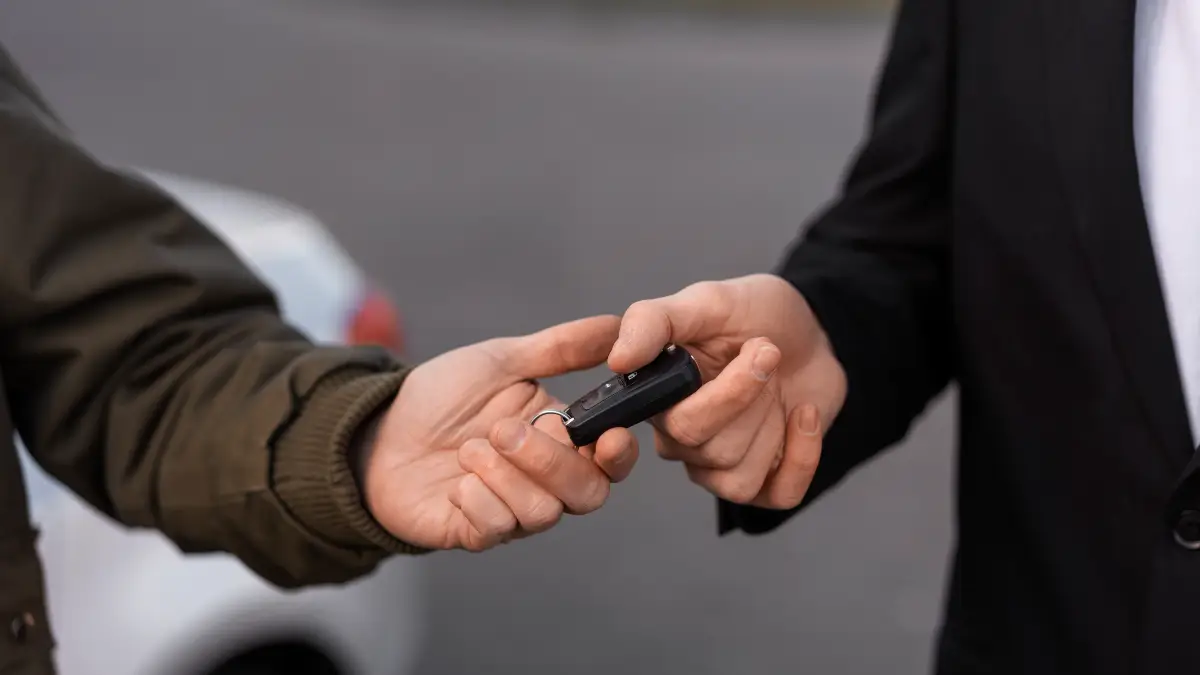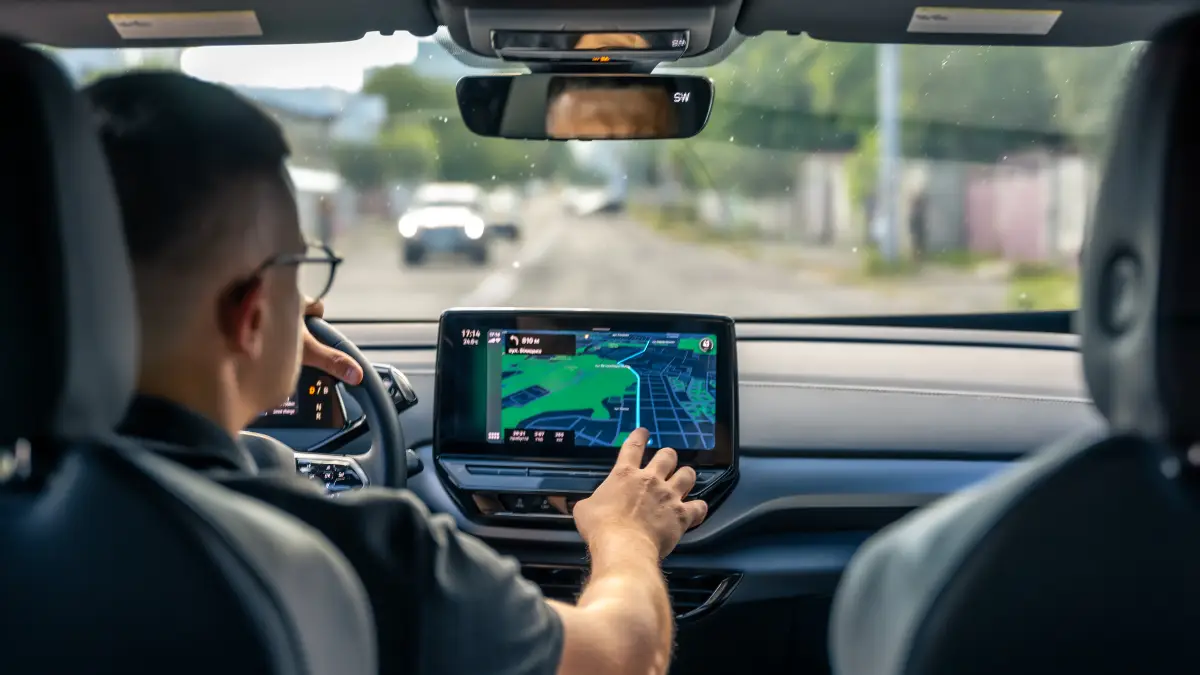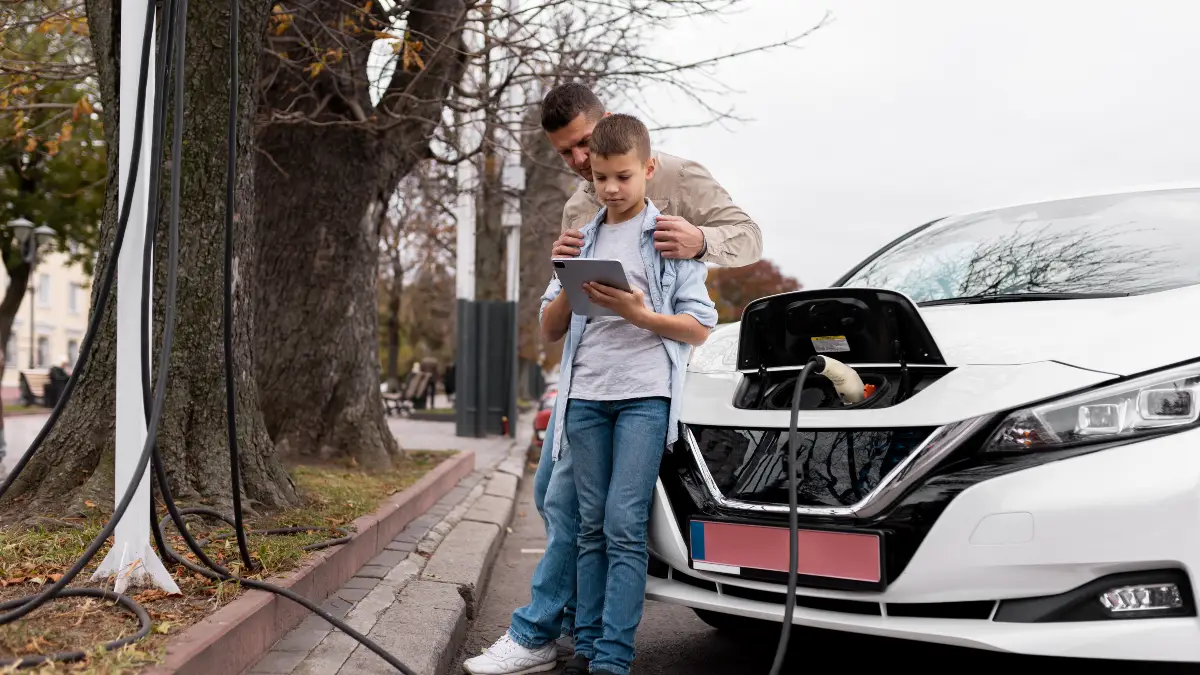You buckle up. You lock the doors. You trust the safety features your car promised.
But modern vehicles have created new dangers that most drivers don’t see coming. Your keyless entry system helps thieves steal your car in seconds. Your “smart” technology opens doors for hackers. Your autopilot fails when you need it most.
The safety features you paid extra for? They’re failing in critical moments—and manufacturers aren’t being honest about it.
These aren’t rare glitches. They’re widespread problems affecting millions of vehicles on the road right now. And chances are, your car is vulnerable to at least one of them.
Here are five ways your modern car is less safe than you think.
1. Your Keyless Entry System Is a Silent Thief’s Best Friend

Your car is locked. Your keys are inside. You think everything’s fine.
But thieves just walked up to your driveway with two small boxes. Thirty seconds later, they’re driving away in your car. No broken glass. No alarms. No trace.
Those boxes cost criminals $80-$100 online. They amplify the signal from your key fob. One thief stands near your front door. The other stands by your car. They trick your car into thinking the key is right there.
The door unlocks. The engine starts. Your car is gone.
This isn’t rare. According to Tracker security data, this affects 96% of motorists. German ADAC tested 237 keyless vehicles in 2024. A shocking 230 of them—that’s 97%—were vulnerable.
Insurance companies are catching on. Some are refusing claims because there’s no sign of forced entry. You might have a hard time proving your car was actually stolen.
The numbers are scary
UK police data from July 2023 shows that keyless theft made up 98% of all stolen vehicles they recovered. Think about that. Nearly every stolen car they found was taken using this method.
These relay devices can capture your key fob’s signal from over 100 meters away. That’s longer than a football field. And in August 2023, only 7.1% of vehicles tested had adequate protection.
This hits everyone. Luxury cars, budget sedans, SUVs. The average stolen vehicle is worth $50,000. And 82% of commercial vans are stolen without keys.
Why your car is at risk
Most new vehicles come with keyless entry now. It’s standard. You’re probably keeping your keys on a hook near your front door. Or on the kitchen counter. Maybe a hallway table.
That spot that’s so convenient? It’s also the perfect distance for thieves to pick up the signal.
Many people think a locked car equals a secure car. Not anymore. The technology moved faster than the security.
What you need to do right now
Buy a Faraday pouch. They cost $10-$30 on Amazon. Put your key fob inside when you’re home. These pouches block the signal completely. Simple fix, big impact.
Move your keys away from doors, windows, and exterior walls. Store them deep inside your house. Consider old-school solutions. A steering wheel lock makes your car less appealing. Thieves want easy targets.
Set up security cameras pointing at your driveway. Many thieves scout houses first. Cameras make them move on. Check your car’s manual. Some vehicles have a “sleep mode” for key fobs. Use it. Park in your garage whenever you can. An extra barrier helps.
Consider aftermarket security systems that need additional authentication. These add layers of protection.
Expert perspective
Security researchers consistently warn that relay attack technology is evolving faster than vehicle manufacturers can respond. The gap between what thieves can do and what your car can prevent keeps growing.
Your keyless entry was designed for convenience. But that convenience created a vulnerability that criminals exploit thousands of times every day. Don’t wait until you’re another statistic.
2. Your “Smart” Car Is a Hacker’s Playground

Your car is watching you. Tracking you. Collecting data about everywhere you go and everything you do.
And hackers know it.
The invisible computer on wheels
Modern vehicles have up to 3,000 microchips inside them. They run on 150 million lines of code. That’s more than a fighter jet.
Every infotainment screen, every over-the-air update, every connected feature creates a door that hackers can try to open. They’re targeting telematics systems, exploiting wireless communications, and looking for weak spots in the software.
When they get in, the damage goes beyond stolen data. They can install ransomware. Track your location. In some cases, they can actually control vehicle functions remotely.
September 2024 brought a wake-up call. Security researchers found a vulnerability in Kia vehicles. Anyone could register as a dealer in the system and take control of any Kia built after 2013. Any Kia. Any person with basic tech skills.
Most drivers have no idea their car is collecting massive amounts of personal data every single day.
The 2024 security meltdown
Over 100 ransomware attacks hit the automotive industry in 2024. More than 200 data breaches were reported. These aren’t small incidents at sketchy companies. These are major manufacturers and suppliers.
There are now 400 million connected cars on the road globally. That number was 237 million just three years ago in 2021. The growth is explosive.
In September 2024, the U.S. Department of Commerce took an unusual step. They proposed banning connected vehicles with Chinese or Russian hardware. Why? National security concerns about who controls the data and the potential for remote manipulation.
Researchers tested over-the-air update systems across 18 car brands. They found vulnerabilities in most of them.
Why this gets worse in 2025
The “cybersecurity gap” keeps growing. Threats evolve faster than defenses. Way faster.
A successful attack could disable your vehicle remotely. It could manipulate safety systems. Some researchers have demonstrated taking control of steering and brakes in lab conditions.
Location tracking raises serious concerns. Connected cars near military bases and critical infrastructure create potential intelligence risks.
Supply chain attacks are the new frontier. Compromised components get installed during manufacturing. You can’t see them. You can’t remove them.
The EU only made cybersecurity rules effective in June 2024. The regulations are still catching up to the technology.
Protect yourself now
Install software updates immediately when your car prompts you. Yes, updates are annoying. But they often patch security holes that hackers are actively trying to exploit.
Use strong, unique passwords for your connected car apps. Don’t reuse passwords from other accounts. Go through your infotainment settings. Disable features you don’t actually use. Every connection is a potential risk.
Be careful about third-party apps that connect to your vehicle. Read the permissions they’re requesting. Before buying your next car, research the manufacturer’s cybersecurity track record. Some companies take this seriously. Others don’t.
Monitor your credit reports. Data breaches might expose your personal information. Actually read the privacy policy. Find out what data your car collects, where it goes, and who can access it. The answers might shock you.
Expert warning
Cybersecurity experts from NHTSA and private firms agree on one thing: the automotive industry wasn’t ready for this. These companies built mechanical expertise over decades. Software security is a different game entirely.
Your car is a computer that happens to have wheels. Treat it like you would treat your laptop or phone. Because hackers already do.
3. Your “Autopilot” Is Anything But Automatic

You’re cruising at 65 mph on the highway. Traffic is light. Everything feels safe.
Suddenly, your car slams on the brakes. Hard. For no reason. You check the mirrors in panic. There’s a semi-truck behind you. It’s getting closer fast. This is phantom braking. And it’s causing crashes.
The false alarm that kills
Advanced Driver Assistance Systems (ADAS) are supposed to keep you safe. They watch for hazards. They help you brake. They monitor blind spots.
But sometimes they see dangers that don’t exist. A shadow on the road. An overpass. Oncoming traffic in the other lane. The system thinks there’s a threat and hits the brakes at highway speed.
That creates a new danger: rear-end collisions. The car behind you isn’t expecting you to brake. They can’t react in time.
The system names don’t help. “Autopilot.” “Full Self-Driving.” These sound like the car can drive itself. It can’t. These are Level 2 assistance systems. You’re still the driver. You’re still responsible.
But the marketing makes people forget that.
The death toll keeps rising
From June 2021 to June 2024, NHTSA collected reports on nearly 4,000 incidents involving autonomous or ADAS-equipped vehicles. Tesla vehicles made up 53.9% of them—that’s 2,146 incidents from one manufacturer.
Eighty-three people died in these accidents through June 2024. In 2024 alone, there were 473 incidents in just the first six months.
NHTSA received over 400,000 complaints about phantom braking. Read that again. Four hundred thousand.
Lawsuits about ADAS calibration problems jumped from 3 in 2018 to 61 in 2024. The legal system is catching up to the technology problems.
At least one death in Missouri was directly attributed to phantom braking. A car braked unexpectedly on the highway. The vehicle behind couldn’t stop in time. Someone died.
A Mitchell study found that 80% of drivers don’t understand the limitations of their blind spot monitoring systems. They think it works better than it does.
The complacency crisis
ADAS comes standard on 92.7% of new vehicles now. It’s everywhere. And people are getting too comfortable with it. Drivers take their hands off the wheel. They look at their phones. They trust the system to handle things.
But the system wasn’t designed to replace human attention. It was designed to assist it. Multiple fatal crashes have been linked to driver complacency. People thought the car would stop. It didn’t.
NHTSA is trying to create regulations. But the technology is moving faster than the government can keep up.
How to use ADAS without dying
Never fully trust these systems. Keep your hands on the wheel. Keep your eyes on the road. Every second. Every mile.
Read your vehicle’s manual. Each manufacturer’s system works differently. Know what your specific car can and can’t do. Be ready to take control instantly. That’s not a suggestion. It’s survival.
Get your ADAS systems calibrated regularly. After a windshield replacement, after any collision, the sensors can be off. Calibration fixes that. If phantom braking happens, check your mirrors first. Stay calm. Maintain control. Don’t panic and swerve.
If a feature makes you uncomfortable or you don’t trust it, turn it off. You can disable most ADAS features. Report persistent problems to NHTSA at SaferCar.gov. Your report might prevent someone else’s crash.
In heavy traffic or complex city driving, consider disabling features. Sometimes the system gets overwhelmed by too much input.
Expert reality check
IIHS and NHTSA researchers are clear: these systems are not autonomous driving. They require constant human supervision. Marketing materials that suggest otherwise are dangerous.
The moment you think you can relax and let the car handle things, you become the hazard. ADAS is a tool. Like any tool, it only works safely when used correctly.
At least one person is dead because a car braked when it shouldn’t have. Don’t be the next statistic.
4. Your Pedestrian Safety System Won’t Save That Child

Your car promises to protect pedestrians. The brochure said so. The salesperson emphasized it.
But when it matters most, the system goes blind.
The safety feature that isn’t
Pedestrian automatic emergency braking (PAEB) is marketed as a comprehensive safety solution. The car will see someone in the road and stop automatically.
The reality is different. These systems have serious limitations in the exact situations where you need them most.
They fail at night. They miss children darting between parked cars. They don’t react during right turns. They overlook adults standing at the roadside waiting to cross.
75% of pedestrian fatalities happen after dark. That’s when these systems are least effective.
The sensors struggle with small children. They can’t see dark clothing well. Crowded environments confuse them. Rain and snow make them unreliable.
NHTSA only finalized requirements for PAEB in 2024. Those rules don’t take effect until 2029. The technology in your car right now? It’s the practice run. These systems are supposed to be the last line of defense when human drivers aren’t paying attention. But they’re not reliable enough for that role.
The test results nobody shares
AAA conducted extensive testing in 2019. The results are still relevant in 2024 because the technology hasn’t improved much. At night, the systems were completely ineffective. They did not detect or react to adult pedestrians at 25 mph in darkness.
Not sometimes. Not rarely. Never. In daylight, crossing at 20 mph, the systems only avoided collisions with adults 40% of the time. That’s a coin flip with worse odds.
When a child-sized dummy darted between parked cars at 20 mph, collisions occurred 89% of the time. The car almost never stopped. After making a right-hand turn, the collision rate with pedestrian targets was 100%.
Every single time. At 30 mph, AAA found the systems “ineffective in all scenarios.” Speed matters. And most of these tests were at relatively slow speeds.
Nearly 6,000 pedestrians die every year in the U.S. That’s 16% of all traffic deaths. Vulnerable road user fatalities have been trending upward for over a decade.
The false security trap
Drivers believe these systems will prevent all pedestrian collisions. The marketing encourages that belief. This leads to reduced vigilance. People pay less attention because they think the car will handle it.
But the technology performs worst precisely when it’s needed most. At night. In complex situations. At higher speeds. Performance varies wildly across manufacturers. There’s no consistent standard.
NHTSA is only now finalizing testing protocols. The industry has been selling these systems for years without standardized verification.
How to actually protect pedestrians
Never rely solely on pedestrian detection. Your eyes and brain are still the primary safety system. Stay alert, especially after dark. Slow down in pedestrian-heavy areas. School zones, crosswalks, parking lots, residential streets. Speed kills when the technology fails.
Be extra cautious during right turns and anywhere with parked cars. Those are proven blind spots for these systems.
Upgrade your headlights if your vehicle allows it. Better visibility helps both you and the sensors. IIHS Top Safety Pick awards now require good headlight ratings for a reason.
Know your specific system’s limitations. Check the manual. Ask the dealer. Don’t assume it works like the commercials suggest.
In rain, snow, or fog, assume the system won’t work. Drive accordingly.
Make eye contact with pedestrians before you proceed through intersections or crosswalks. Confirm they see you.
When children are anywhere nearby, give extra space and time. The system can’t see them reliably. You need to.
AAA’s warning
AAA’s testing revealed that pedestrian detection systems “should not be solely relied upon to avoid crashes with pedestrians.” Their data shows these systems can provide some benefit in specific scenarios, but they’re far from the comprehensive solution marketed to consumers.
Six thousand pedestrian deaths per year. Systems that fail 89% of the time when kids are involved. Technology that goes blind at night when most deaths occur.
Your car’s pedestrian detection might help sometimes. But it’s not going to save that child who runs into the street. That’s still on you.
5. Your Electric Vehicle Is a Fair-Weather Friend

The salesperson said 300 miles of range. You believed them. Then winter came. Now you’re getting 180 miles. On a good day. Welcome to the reality of electric vehicles in extreme weather.
The battery that quits when you need it most
EVs lose dramatic amounts of range when it gets too cold or too hot. We’re talking 40% less in cold weather. 30% less in extreme heat.
Those numbers don’t appear in the advertising. The battery chemistry has limitations that manufacturers don’t prominently disclose.
The problems go beyond range. First responders are discovering that EV battery fires reignite days after an accident. The ADAS sensors that many EVs rely on heavily? They degrade in bad weather too.
And in an emergency, some drivers can’t figure out how to open the doors manually. The electronic releases don’t work if the power is cut.
The real-world numbers
AAA research found a 41% average range loss at 20°F with the heat running. That 300-mile range becomes 177 miles.
Extreme heat causes a 30% reduction. Your battery hates being too hot or too cold.
In severe rain, the mm-wave radar that powers ADAS features loses up to 45% of its detection range. Your safety systems work worse when roads are most dangerous.
Heat pumps can reduce cold weather loss to around 20%. That’s better. But many EVs don’t have heat pumps. And even some that do are performing poorly.
GM’s Cadillac Lyriq and Chevrolet Equinox both have heat pumps. Both showed unexpectedly bad cold weather performance in real-world testing. The technology doesn’t always work as promised.
A Washington State Patrol study in 2025 detailed the ongoing challenges with EV battery fires. Re-ignition, toxic gas exposure, and extended burn times create serious risks for first responders.
Over 1.4 million EVs were sold in the U.S. in 2023. That’s a lot of cars with these weather vulnerabilities.
And 2024 saw a record 27 billion-dollar weather disasters. Extreme weather is becoming more common, not less.
The safety risk multiplier
Range anxiety stops being anxiety and becomes reality. Drivers get stranded in cold snaps. Running the heater to stay warm drains the battery faster.
The ADAS systems that EVs depend on perform poorly in the same adverse weather that kills range. Cold weather can drop pedestrian detection rates from over 90% down to under 30%, depending on conditions.
First responders aren’t fully prepared for thermal runaway in EV batteries. The fires are different. The risks are different. Training is still catching up.
Marketing materials show EVs in ideal conditions—68-75°F with sunny skies. They don’t show what happens at -10°F or 105°F.
Only 16% of Americans say they’re “likely” to purchase an EV. That’s the lowest number since 2019. Range concerns and weather performance are major factors.
How to survive extreme weather in an EV
Plan your charging around weather forecasts. Before a long trip in extreme temperatures, check the weather and add charging stops.
Precondition your battery while plugged in. Warm it up in winter or cool it down in summer before you leave. This uses grid power instead of battery power.
Keep your charge above 20% in extreme weather. Don’t let it get low. Cold batteries charge slower too. Reduce heating and cooling while driving when possible. Dress warmly in winter.
Use seat heaters instead of cabin heat—they use less power. Research your specific EV model’s performance in extreme weather before buying. Some handle it much better than others.
Carry emergency supplies in winter. Blankets, water, phone chargers, food. If you get stranded, you need to stay warm without draining the battery completely. Know where your manual door releases are located.
Practice using them. In an accident with power loss, you need to escape quickly. Install a Level 2 home charger if you can. Consistent, overnight charging helps maintain battery health.
If you live in a cold climate, prioritize models with heat pumps. Check real-world reviews, not just specs. In extreme cold, expect your range to be 40-50% less than advertised. Plan accordingly. Better to arrive with extra range than get stranded.
The expert truth
EV weather performance is a significant concern that isn’t communicated clearly to consumers. The technology works great in ideal conditions. But ideal conditions aren’t reality for most of the country for most of the year.
Your EV is an amazing piece of technology. In good weather. When the temperature is right. When you’re not pushing the range limits.
But when the weather turns extreme—which it’s doing more often—that amazing technology starts to struggle. Know the limitations before you depend on it.


